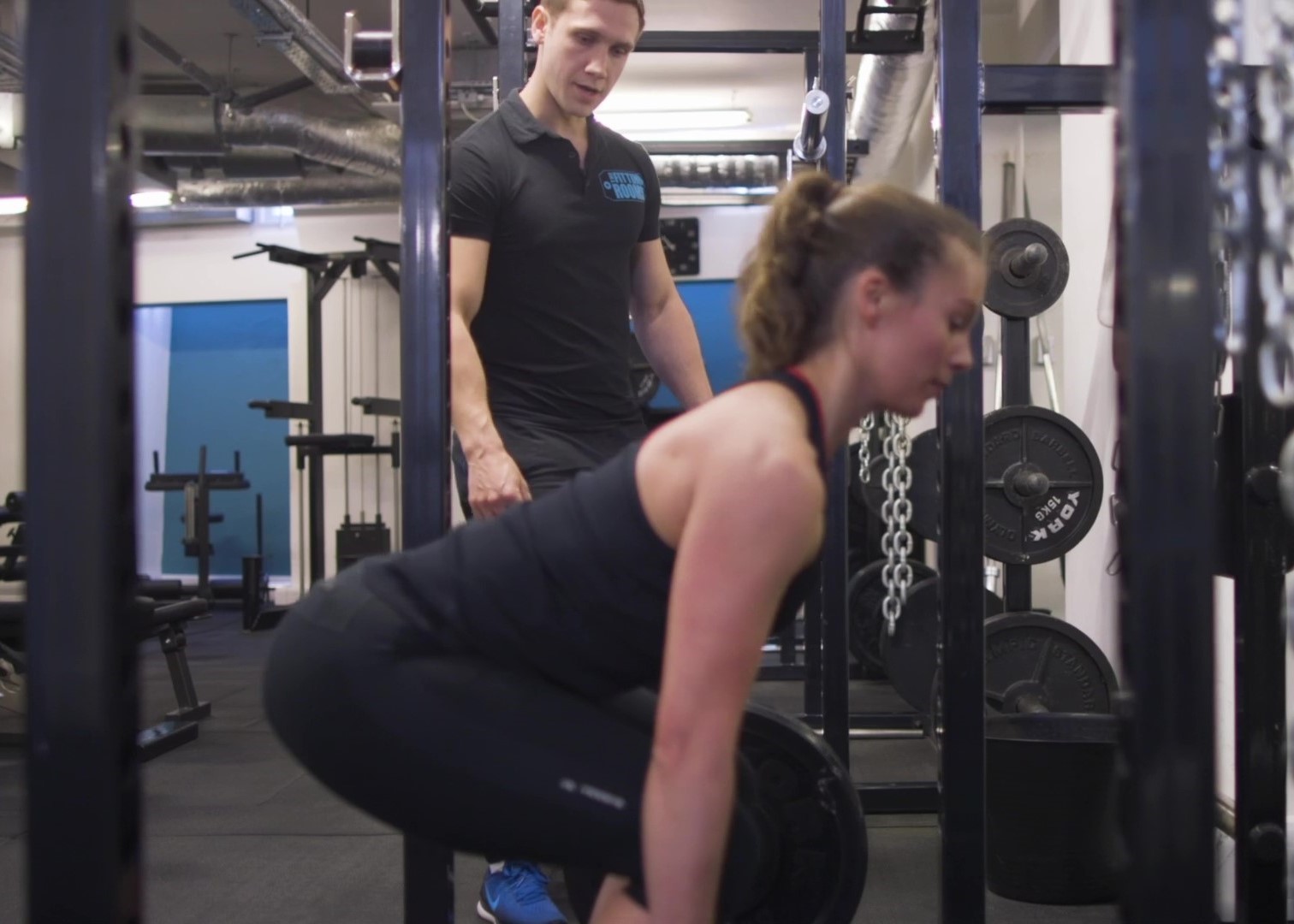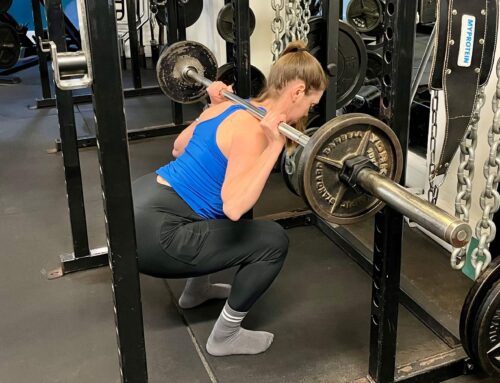The Importance of Training Your Posterior-Chain
(and how to train it effectively)
Do you suffer from lower back pain? Are you starting to feel like your big lifts in the gym are stagnating? Or perhaps you don’t feel as powerful on the pitch as you should? If so, the chances are that you’re not effectively training your entire posterior chain.
What is your posterior chain and what is it responsible for?
Your posterior chain refers to the muscles that run down the back of your body from your neck to your heels, and which play a major role in functional strength and movement.
The muscles of the posterior chain allow you to move powerfully and efficiently, supporting activities like lifting, bending, standing, and maintaining posture. They are involved in nearly every athletic movement, from sprinting to weightlifting, and are essential for balance and injury prevention. In daily life, a strong posterior chain helps reduce back pain, improves posture, and aids in performing everyday movements with ease.
The posterior chain muscles include the following muscles / muscle groups:
Glutes: Major muscles involved in hip extension, stability, and power generation for activities like walking, running, jumping, and lifting.
Hamstrings: Important for knee flexion, hip extension, and decelerating movements; they also help prevent injuries, especially in the knees.
Erector Spinae: These muscles in your lower back support spinal alignment, stability, and play a critical role in lifting and everyday posture.
Trapezius & Rhomboids: These upper back muscles help with scapular movement and support proper posture by preventing forward rounding of the shoulders.
Gastrocnemius & Soleus: Your calf muscles are essential for movements that involve the ankle, like walking, running, and jumping, by generating push-off power.
What are the benefits of training your posterior chain?
Training your posterior chain is crucial to building a strong, stable, powerful and injury-free body. Key benefits of posterior chain training include:
Improves Posture: Strong posterior chain muscles help counterbalance the muscles on the front of your body, promoting better posture and reducing the tendency to hunch or round your shoulders. This is important for anyone sat in a desk a lot of the time, as well for cyclists who tend to work their anterior muscles more.
Enhances Athletic Performance: Many athletic movements, such as running, jumping, and lifting, rely heavily on the posterior chain. Strengthening these muscles can improve your speed, power, and stability in these activities.
Injury Prevention: Weak posterior chain muscles can lead to imbalances that increases the risk of injury, particularly in the lower back, knees, and hips. Training the posterior chain muscles can help reduce the risk of strains and other common injuries.
Supports Functional Movements: Everyday activities, like bending, lifting, and climbing stairs, rely on a strong posterior chain. Building strength in these muscles makes daily tasks easier and can improve your overall quality of life.
Boosts Metabolism: The posterior chain includes some of the largest muscle groups in your body, like the glutes and hamstrings. Training these muscles can boost your metabolism and support fat loss, as larger muscles require more energy.
Enhances Balance and Stability: A strong posterior chain helps stabilise your body, improving balance and coordination, which is essential for activities like squats, lunges, and other compound movements, but is also extremely important as we age and may become less stable.
Posterior Chain Exercises – Hip Extension
Hip extension – the movement of opening the hip joint to increase the angle between the thigh and pelvis – is a primary function of the posterior chain, and what most people associate with posterior chain training. The Deadlift is the most well known hip extension exercise, and many people will include this into their programming and consider their posterior chain training complete. But we can see that the posterior chain is clearly a highly complex group of muscles that needs specific training to strengthen.
So. whilst the Deadlift is a great hip-extension exercise, and should be included in most posterior chain workouts, the workout shouldn’t finish there – it’s important to use a variety of exercises that challenge the different ranges of the posterior chain: low, mid and end.
Low Range
· Seated Good Morning
· Standing Good Morning
Mid Range
· 45’ Back Extension
· Romanian Deadlift
End Range
· Hip Thrusts
· Horizontal Back Extension
· Reverse Hyperextension
The conventional Deadlift works the mid range, similarly to the Romanian deadlift, but it also has additional assistance from the quads at the beginning of the lift. Since a greater training intensity is achievable with the Deadlift, if you are using it in your workout, it is generally advisable to perform the exercise at the beginning of the session.
When it comes to training the posterior chain it is important not to fall into the trap of using weights too light that don’t physically challenge you. Treat it like any other session and train with some real intensity: try holding a heavy barbell or dumbbell for exercises such as the 45’ back extension; and squeeze a dumbbell between the ankles, or use a cable attachment around the ankles for Reverse Hypers.
Knee Flexion & Calf Exercises
While hip extension is a major function, the posterior chain muscles work together to provide power, stability, and control in many types of movement. This integrated role is why it’s beneficial to train the entire posterior chain rather than focusing only on hip extension exercises.
For a truly powerful posterior chain and an impressive physique, knee flexion and calf training should be included in your weekly training, as well as training hip extension.
Knee Flexion
· Hamstring Curl – Foot variations: toes in (plantarflexed) / toes out (dorsiflexed) / toes neutral
· Nordic Hamstring Curl
· Glute-ham Raise
Calves
· Standing Calf Raise
· Seated Calf Raise
· Donkey Calf Raise
When designing your next training plan, try to include a number of the above mentioned exercises. You could either design a stand alone posterior chain workout, or incorporate these exercises amongst your weekly split.
Posterior Chain Workout example
This example workout shows how you could structure a posterior chain workout day, to work the whole chain through it’s multiple functions. You could use a workout like this as part of a 3 day split, alongside a Legs & Shoulders Day and a Chest & Back Day.
A1: Deadlift 4 x 6 reps – rest 180 seconds
B1: Hamstring Curl (poliquin) 3 x 4 reps – rest 75 seconds
B2: 45’ Back Extension 3 x 8 reps – rest 75 seconds
C1: Standing Good Morning 3 x 8 reps – rest 60 seconds
C2: Leg Press Calf Raise 3 x 12 reps – rest 60 seconds
D1: Reverse Hyperextension 3 x 8 reps – rest 60 seconds
D2: Seated Calf Raise 3 x 15 reps – rest 60 seconds
An effective alternative would be to use a 2-day split of a Posterior & Push Day and a Legs & Pull Day.
Let us know your favourite ways to train posterior chain in the comments!
Read our other articles here:
Reverse Hyper-Extentions
Romanian Deadlifts
Why Women Should Do Calf Training
Top Tips For Hamstring Training








Leave A Comment